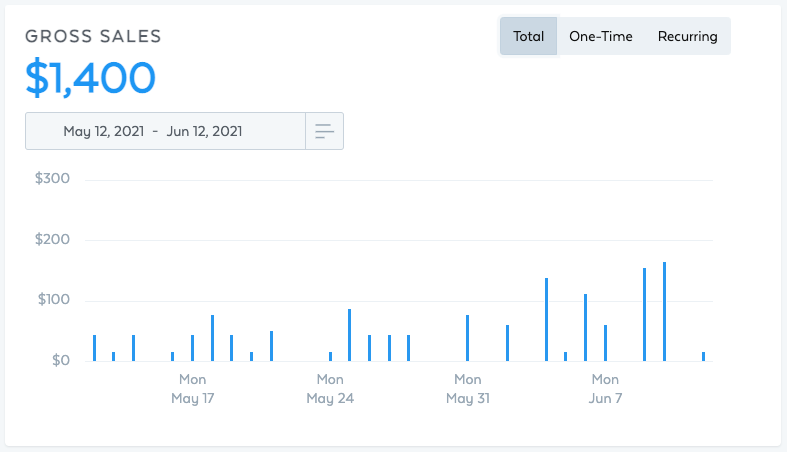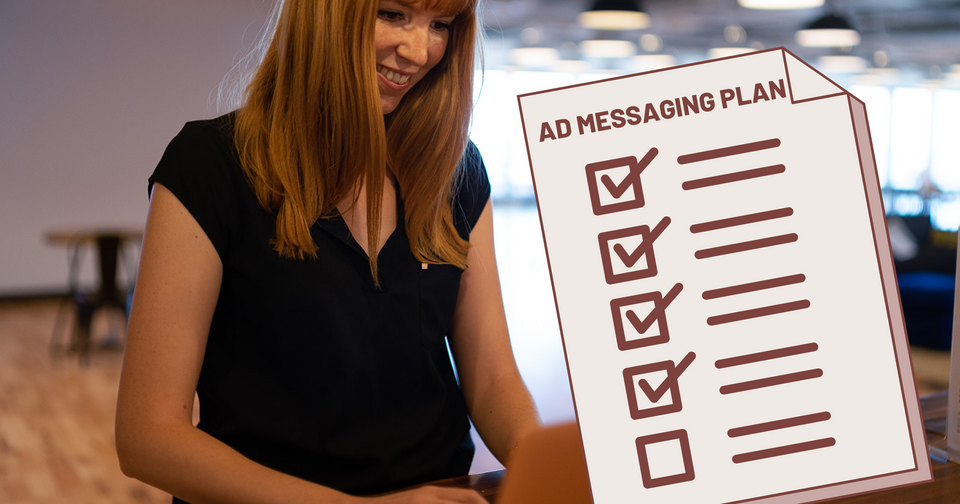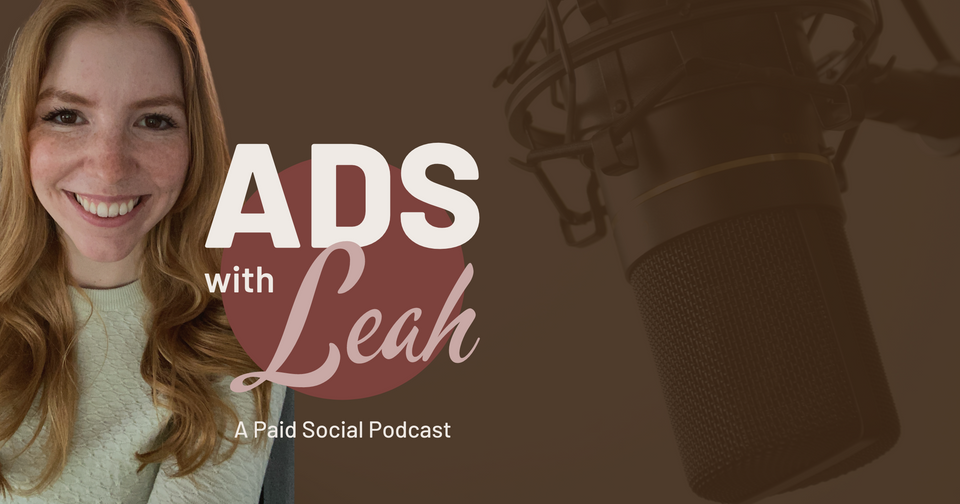Behind the Scenes of Launching A Passive Income Stream

In this post I'm sharing how I launched a low-ticket digital product and generated a whopping $200 in net passive income.

Million dollar success stories are super inspiring, but I believe the internet could use a few more "approachable" wins.
As I was going through this process, I tried to find examples of people who shared their experience with getting started.
I wanted to see that period of uncertainty before things really took off for them. We all know that most overnight success stories are often years in the making, and I wanted to hear the story of their “before”.
What are all the things they tried and failed at before finding their smash hit success?
How did they go from $0 to making their first $100? $1,000? This is usually the hardest part!
The Low-Ticket Offer Strategy
A low-ticket offer is an offer that is usually priced around $7 - $47.
Another term for this in the digital marketing industry is SLO, which stands for self-liquidating offer. It self-liquidates because the revenue generated from the product purchase "liquidates" the cost of acquiring the customer, so you can get new customers and grow your email list at break even.
Why would you want to get customers at break even instead of at a profit??
Because once you've gotten a customer, it's easier to sell them other products or services later on. This strategy allows you to grow an audience for free that you can then monetize in the future.
The price of a low-ticket offer is low enough that it can easily be an impulse purchase and you don't need to do too much selling to get a sale. You can market to cold audiences who have no idea who you are, and still be able to get purchases.
Selling a low-ticket course or digital product is an AMAZING way to grow an email list and build an audience for several reasons:
- You're growing a list of actual buyers - people who have invested (if just a small amount) into solving the problem you can help them with.
- Your audience is much more likely to build a relationship with you if they consume the product - and there's more incentive to consume the product since they paid for it.
- You can invest ad spend to grow your list without actually losing money - because you make it right back when they purchase!
I strongly believe this is a much better strategy than offering a freebie to collect emails. There are so many free lead magnets out there nowadays that most people don’t take them seriously.
Part 1: Launching My First Offer
The first offer that I created was a course called "The Angle Vault" that I priced at $27. It's a short course that teaches people the importance of testing different messaging in ads, along with a ton of different angles they can use.
I love this course and think it has HUGE value to anyone running ads. In fact, I believe that ad messaging is the most important part of getting ads to work.
(Shameless plug: you can buy this course here - I think it’s amazing and can make anyone a much better advertiser and marketer).
But, this offer didn't work.
I ran the ads for 2 weeks and got only 2 sales. I lost about CAD $316.
I built this product because I feel the material in it has incredible value, and also because it aligns well with the courses that I want to create in the future.
But it was not a product that sells well with this type of funnel.
Here's why I think it didn't work:
- The concept of “ad angles” is a bit abstract and difficult to explain simply in ads. People don’t really understand why they need it until they actually learn it.
- With a course like this, there needs to be a good amount of trust in the instructor in order to believe the content will be good. My ads are running to cold audiences who have no idea who I am, so that trust isn't there.
- A course like this doesn't provide an "easy win". Instead, students have to commit to studying the content and implementing it, which takes time.
I made a few mistakes with this offer including:
- I spent too much time on building this product before validating the idea. I built out the whole course, plus a huge landing page before I even had a single sale. As a result, I didn’t want to let this offer flop and spent too long on it before pivoting to a new idea.
- The metrics didn’t look great from the start. I let them run too long before making the call about if this funnel would work.
I made the below video at this stage in the process and shared my numbers.
(Tip: You can watch the videos at 2X speed.)
Part 2: Testing My Second Offer
After the first offer didn't work, I decided to test my hypotheses for why it didn't work (listed above).
I put together a product that:
- Is extremely simple to understand exactly what it was
- Is a specific deliverable (template) that requires less trust
- Provides an easy win and can be implemented very quickly
The product that I built is a collection of Canva templates that can be used to create ads for Facebook and Instagram. It also includes a few trainings on what types of images and videos work best for Facebook ads and how to use the templates.
It’s called “Scroll-Stopping Ad Templates” and I priced it at $17.
This product got 2 sales within the first 12 hours of being live! I knew right away I was onto something.
For this course, I whipped up a simple “minimum viable product” that had less than 10 templates and just 2 training videos. I also didn’t bother to build a landing page, I just sent people straight to the cart page.
As soon as I started getting sales, I began adding more and more content into the product. I plan on continuing to improve the product so that the value is an incredible deal.
I recorded the following video at this stage in the process:
Part 3: Projecting Profit With Bumps and Upsells
After getting a sale almost every day with this offer for a couple weeks, I wanted to start optimizing my profit with bumps and upsells.
A bump is something that the customer can add to their order during checkout, and an upsell is a product you sell right after the sale has been completed.
These can both go a long way to increasing AOV (average order value). The higher your AOV, the more revenue you can generate.
The cost for me to acquire a new customer from ads has been around $40, so it's not going to break even with just my $17 product. I need to offer customers something else too in order to break even.
With low ticket prices, bumps and upsells are critical for being able to be profitable.
I used The Angle Vault course as my first bump since I already had it made. Surprisingly, it sells quite well as an upsell even though it didn’t sell on its own.
I also added a second bump, Ad Troubleshooting Rubric. Having 2 bumps increased my average order value from $30.21 to $42.00!
In this video I play around with a calculator I built to start projecting my profit once I improve my bumps and upsells on the funnel. You can really see how with just a few small changes to the offers, this funnel can go from breakeven to very profitable quite quickly.
Part 4: Reviewing My Landing Pages and Ad Tests
In the following video, I share the landing pages and ads that I tested.
Part 5: The Ups and Downs of Testing
My funnel is finally profitable, but who knows how long that will last!
My funnel is far from optimized at this point, so I still have a lot of work to do to get it to where I want it to be. Right now my ads are fatiguing really quickly which is telling me that the offer needs to be improved.
In this video I share about the mental roller coaster of funnel and ad optimization, which I feel is just as important to learn about as the technical side.
It's easy to get in your head and forget that it's just a process and it takes time. Follow what the data is telling you and don't give up!
Timeline and Results
April 23rd - May 5th, 2021
Launched and ran ads for The Angle Vault course
Only made 2 sales and then turned them off after 12 days
May 12th, 2021
Launched ads for Scroll-Stopping Ad Templates
Got a sale immediately (within several hours of ads being live)
May 17th, 2021
Added another product Facebook Ad Foundations as a free bonus for Scroll-Stopping Ad Templates
This increased conversion rate from 8.00% to 9.09%
May 23rd, 2021
Launched a full landing page for Scroll Stopping Ad Templates (instead of just sending to the cart page)
This increased conversion rate from 8.72% to 13.33%
May 30th, 2021
Created a second bump to add to the funnel: Troubleshooting Ad Rubric
This increased the percentage of people who took a bump from 52.63% to 61.11%
Also increased Average Order Value from $31.21 to $42.00
As you can see, this entire process has taken place over the course of less than two months.
My second offer (Scroll-Stopping Ad Templates) started selling at break even pretty much immediately. This means the time from starting to build my offer to break even was about one month.
Because I have a full client load right now, I’m mostly working on this on the weekends. I spent about 10 hours per week on it, some weeks more, some weeks less. I believe this could be doing quite a bit better right now if I had more time to spend on testing.
I also want to point out that advertising and funnels is what I do for a living and I do this all the time for clients. I’ve been marketing online since 2011. This timeline may or may not be a reasonable expectation for you if you decide to do this yourself.
Here’s a breakdown of sales and profit for both offers:
(You can also watch the videos above to see more in-depth data)
The Angle Vault
(April 23 - May 5, 2021)
Total Spent: $424.26
Purchases: 2
Revenue: $108.24
Profit: -$316.02
Scroll-Stopping Ad Templates
(May 12 - June 12, 2021)
Total Spent: $1,484.52
Purchases: 38
Revenue: $1,680.18*
Profit: $195.16
*Note: This revenue is only tracking purchases that came directly from ads. I did not include the extra revenue that came from people finding my courses on my website.
Obviously I’m not going to be retiring on this income anytime soon, but I’m pretty excited about it.
I love that I’m growing my email list and also helping people improve their ads!
I also know that there is huge potential to improve this funnel and get it generating some significant passive income.
There are also other secondary benefits to it:
- Building out a library of courses and resources is really fun. It feels great to be creating something that is going to live on the internet for a while and help people. I generated another couple hundred in revenue just from people purchasing my courses through finding them on my website. I'm sure this revenue would increase even more if I started to promote it on my social media.
- That library also a useful place to send people when they want to hire me, but aren’t quite ready. It makes me feel good to have a place to send people instead of just saying I can't help them.
- Running ads is a great way to increase brand recognition and get your name out there. And since my offer is self-liquidating, I get to do that for free! In addition to growing my email list of buyers, I’m also growing an audience of people who haven’t bought yet but are building familiarity with me/my company and could buy in the future.
Main Takeaways
- Iterate quickly - don't spend too much time on anything before running an experiment on it.
- Simplify - don't make your product too complicated! And don't make the funnel too complicated either - I ran traffic straight to my cart page to test if my templates would sell.
- Keep going - you're probably not going to get it right first try. Just keep moving and testing things until the numbers start to move in the right direction.
If you want to create your own low-ticket offer (or you’re just curious about the process), I hope this gives you insight into what it takes to make one and what could be possible for you too.
If you'd like my help with getting your own low-ticket funnel set up, you can hire me to do it for you, just send me an email at leah@carouselcreative.com or visit my site www.carouselcreative.com.
Thanks for taking the time to read this post and I hope it was helpful for you! I'd love to hear your feedback on LinkedIn, Twitter or Instagram.



